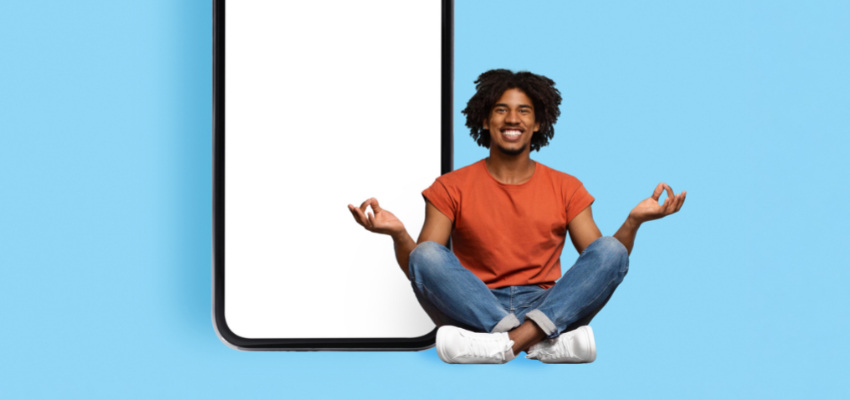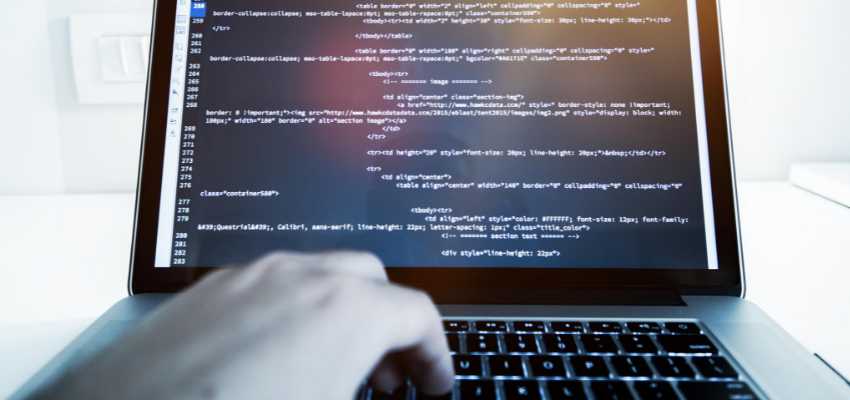Show:
Guide on How to Create a Meditation App
The world market of meditation apps is projected to grow by 48% by 2027. The constant stress and rising anxiety in the lives of the current generation are creating extreme demand for tools that help people slow down and refresh. The increasing mental health awareness further drives the market growth, as more people begin to pay closer attention to their wellbeing.
The revenue from the existing top 100 meditation apps has grown from 500M in 2018 to 1.1B in 2020. Although currently ruled by two chief players — Calm and Headspace — the mindfulness market is ready for innovative approaches, efficient meditation techniques, and convenient technical solutions.

Now is the time to create your own meditation app and take advantage of the limitless possibilities this market is eager to provide. How do you do it? Let us guide you through the process.
1. Define the Concept of Your App
Meditation applications can serve specific purposes, like breathing or sleeping assistance, or integrate several objectives. Although your goal is to reach a wide audience, your application should provide value to users, so a focus on certain areas may be helpful.
You should have a clear idea of what you would like to bring into the market. To figure this out, you may follow these steps:
- Brainstorm. It is not enough to have an idea that sounds great in your head — getting it down on paper is crucial. Write down the description of your app, the technical process it will follow, its features, its purpose, etc. It can help you not only structure your thoughts but also come up with new ones.
- Run market research. Study every meditation app already existing and think about what makes them unique. It will help you define what user needs are already covered and what new features you can present to the market.
- Decide on your target audience. Determine who will benefit the most from your app. It can be a whole demographic group or a specific audience like athletes or children.
This is the basis of your app development that, when approached wisely, will guarantee success.
2. Choose UI/UX Approach
User interface and user experience are vital for an app’s success. Think of it as a house that you need to sell. It may have a good foundation (UX) but lack in attractiveness (UI), or vice versa. In both cases, you won’t sell the house, as it needs to be both well-built and beautiful. The same rule applies to app development.
When it comes to the UI/UX approach, there are many directions you can take. Let’s take a look at some of the major design trends in the UI/UX sphere:
- Minimalistic UI and simplified UX;
- Usage of Voice User Interface (VUI);
- 3D and VR-like design;
- Onboarding function;
- Pastel color visual.
Remember: these are just some of the modern tendencies in the market. When choosing an approach, it is more important to consider what you think is the best for your app. Design trends are just hints, the elements of which you should use if they suit your needs.
3. What Mobile Platform Will You Choose?
Another important thing to consider is the channel of distribution of your meditation app. Due to the growth of the app development sphere, you are not limited to a single mobile platform. Here is the list of active mobile platforms:
- Apple App Store;
- Google Play;
- Amazon App Store;
- Huawei App Gallery;
- Microsoft Store;
- Samsung Galaxy Store.
App Store and Google Play dominate the industry, adding up to 97% share of the total app development market. While Android is much more popular globally, iOS has a higher ROI due to a more wealthy audience. That is why your best bet is to target the two. Note that all platforms will charge a fee for distributing your product.

4. Think How to Encourage People
No matter how attractive and well-developed your app is, you need users to download it and use it daily. How can you engage users before they even download the app? Create a stellar listing for the app stores. Use strong visuals to demonstrate how your app targets the user’s needs. Describe all the key features and long-term advantages to stimulate users to download your application and keep using it long-term.
You can also send your app to testers. They can provide you with feedback and influence your app’s position in the app store market. The higher position you have, the higher the possibility of users downloading your app.
The next step is to stimulate users to stay and use the app. Here is how you can do it:
- Onboard your users. Introduce them to all the main functions of the app in the first several minutes.
- Use push notifications. Meditation is better done every day. That’s why you need to remind users to check in regularly.
- Implement statistics. When a person sees progress, they are more likely to stick to the process.
- You may also implement a reward system where users get internal rewards for using the app daily.
5. Create MVP
When you have an idea about what your meditation app will look like and what it will do, it is important to develop and launch a Minimum Viable Product (MVP). It is a great tool to test if your app can survive in the market. To develop an MVP, you need to do two things: define the main features that you will test and find a team to develop it. Usually, MVP development takes up to three months.
Creating an MVP is not a necessary step. However, its usefulness cannot be overestimated. With its help, you can collect feedback from your potential users, check if the app functions as it should, and determine if it meets the needs of the market and your target audience. You can gather all this information and use it to make the required changes in the final draft.
Final Thoughts
There is more to creating a meditation app than the outlined steps. In the process, you may come across numerous details you will need to work through. Make sure you focus on exclusive features, design, and marketing.
To ensure maximum efficiency of the app development, you can try meditating yourself — after all, you need to know the product you are selling. A clear mind will help you generate innovative ideas and find unique approaches to users.

 Return to Previous Page
Return to Previous Page








